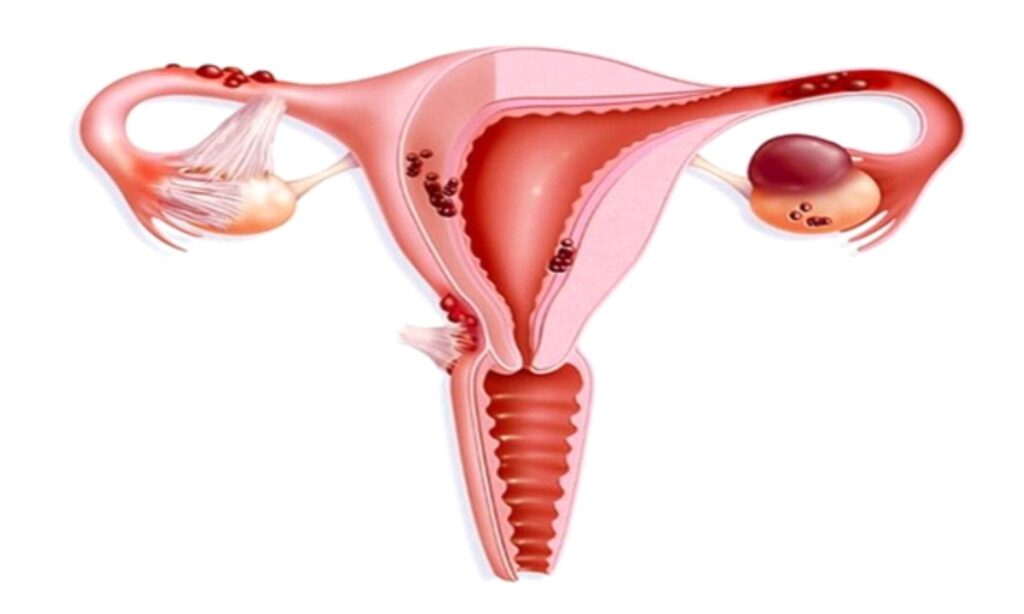-
Opening Hours
Mon - Sat: 10:00 - 19:00
Endometriosis
Home/Female Disorder/Endometriosis
Treatment
Endometriosis
The tissue lining inside the uterus is called as endometrium. When these tissues grow outside the uterus it is called endometriosis.
Endometriosis is a very painful condition and usually occurs in the ovary and fallopian tubes but it can involve any area around the pelvis. When endometriosis involves the ovaries, cysts called endometriomas may form.
With endometriosis, the endometrial-like tissue acts as endometrial tissue would it thickens, breaks down, and bleeds with each menstrual cycle. But because this blood has no way to exit, it becomes trapped.
In endometriosis surrounding tissue can become irritated, eventually developing scar tissue and adhesions bands of fibrous tissue that can cause pelvic tissues and organs to stick to each other.

Symptoms:
- Painful periods (dysmenorrhea).
- Excessive menstrual bleeding.
- Pain with intercourse.
- Pain with bowel movements or urination.
- Infertility.
- You may experience fatigue, diarrhea, constipation, bloating, or nausea, especially during menstrual periods.
Causes:
Risk Factors:
- No pregnancy.
- Starting your period at an early age or going through menopause at an older age.
- Short menstrual cycles, for instance, less than 27 days.
- Heavy menstrual periods that last longer than seven days.
- Having higher levels of Oestrogen in your body or greater lifetime exposure to Oestrogen your body produces.
- Low body mass index.
- Family history of endometriosis.
- Disorders of the reproductive tract.
Homeopathic Approach:
GNW:
Endometriosis is the result of loss conflict. the loss conflict is the fear of losing a beloved person or the loss of a pet. Constant self-blame following a break-up or the death of someone close. Women also suffer loss conflicts after miscarriages or abortion. A loss conflict can be activated through an argument, betrayal, or unfaithfulness of a partner or friend.
Homeopathic Medicines:
- Cimicifuga: Cimicifuga is a useful medicine for endometriosis with pain during periods. It is indicated in case of severe, bearing down pain in the lower abdomen, uterine region, and the lower back during periods. It is also prescribed for pains in the pelvis from hip to hip.
- Sabina: Sabina is indicated when colicky or labor-like pains appear in the pelvis. Marked pains in the small of the back and from sacrum and pubis are also observed in such cases. The menses are profuse, partly fluid, and partly clotted.
- Sepia: Indicated in endometriosis with dyspareunia. i.e., complain of marked pain during intercourse. Burning and soreness are also present. The genitals are sensitive to touch. women prescribed Sepia usually have a low sex drive. A bearing down sensation in the pubic region may be felt.
- Nux Vomica: Nux Vomica is prescribed when pain in the rectum appears during periods. Ineffectual urging for stool may accompany rectum pain. The stool is unsatisfactory, scanty, and incomplete. Also useful in endometriosis with a bleeding per rectum during menses.
For appointment please call @ 020 27455480 / +91 9405 435 981
-
Opening Hours
Mon - Sat: 10:00 - 19:00